After our longer-than-expected bike ride to Truro, we spent the night at the Hostelling International (HI) hostel in Truro ($42 a person).

The place is what you would expect of a hostel: bunk beds, interesting characters, and less-than-ideal sleeping conditions. The staff was super-friendly and made us a pancake breakfast in the morning.
Both at night and in the morning, I scoped out the numerous moths that were attracted to the hostel’s porch lights. I found a Euchlaena moth that I can’t quite get to species. Little is known about these moths.

I also found a northern pine sphinx moth (Lapara bombycoides). The larvae of these moths feed upon various species of pine.

Numerous orange-tipped oakworm moths (Anisota senatoria) could be found on the porches both at night and in the morning. Large and fuzzy, they were very conspicuous. The males are smaller than the females and have a whitish patch on each wing.

While it took something of an epic journey to reach this hostel by bicycle, the surroundings made our trip worth it. We stood in the dark at night and watched a glorious night sky. We could make out satellites and even a couple of shooting stars. The dense white glow of the Milky Way was enough to take our breath away.

In the morning, the beach was only a stroll away. At 10am on one of the busiest tourist weekends of the year, it was almost deserted. People arrived later in the morning but the place was never crowded. The sand was unusually clear of shells or algae.
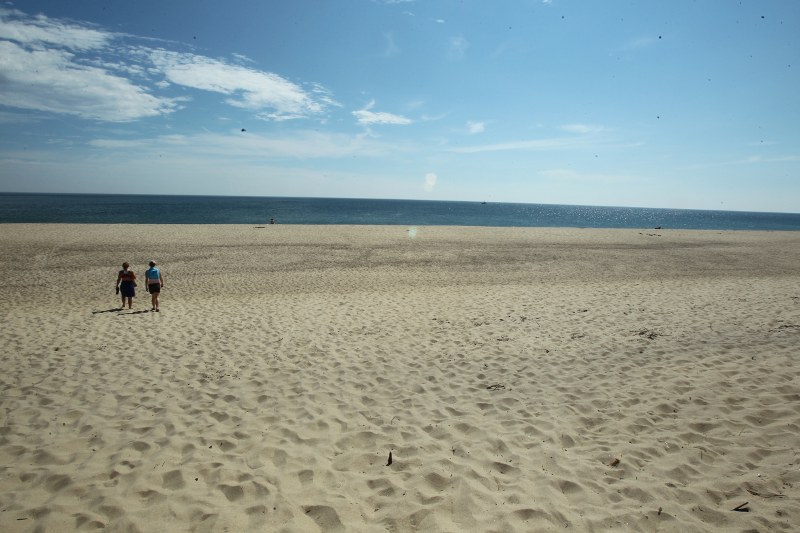
Areas of the sand upshore were cordoned off to protect the nesting grounds of the piping plover. These birds lay their eggs on sand and rely on camouflage for protection against predators. They do such a good job, though, that humans overlook the eggs and step on them. Thus the need to keep us out. We saw two of these birds standing still on the sand.

Unexpectedly, we also found a green stinkbug (Chinavia hilaris) on the sand, not far from the water. These insects feed on plants, so this poor guy probably lost his way. We know the feeling, stinkbug.


I spent some time looking at the plants growing in sand further upshore. American beachgrass (Ammophila breviligulata), an important native plant, helps anchor the dunes, which creates an environment suitable for other plants to grow.
The beach rose or salt-spray rose (Rosa rugosa), a staple on Cape Cod, was planted as another way to stabilize the dunes. There is a healthy debate today as to whether these plants are invasive, needed, or both.

I was surprised to see Virginia creeper (Parthenocissus quinquefolia), a plant commonly found in Boston, growing on the sand. It looked wilted under the heat of the mid-day sun, but it’s doing well otherwise.

Growing near it, a yarrow (Achillea millefolium) plant bloomed. Yarrow has fern-like leaves and tiny flowers that come in bunches like Queen Anne’s lace.
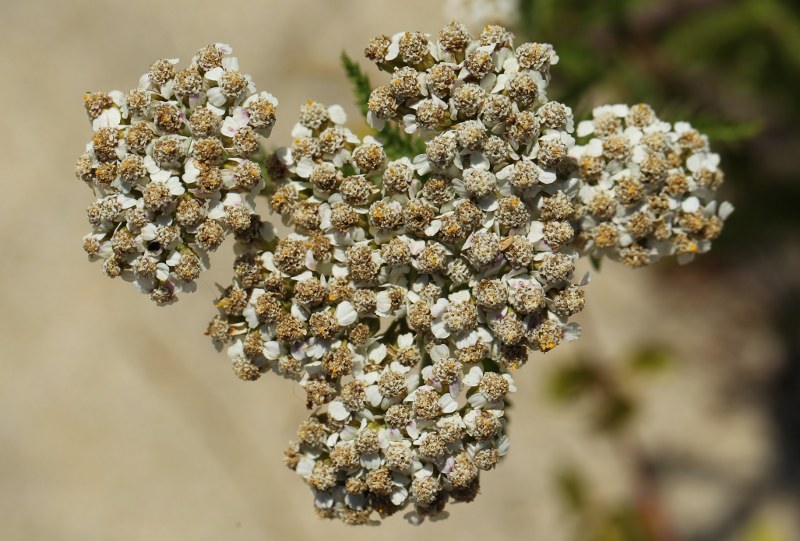
I saw a hoverfly (Tomomerus geminatus) on the yarrow flowers. These flies imitate bees so as to better escape predation. Their abdomens are a work of art!

I saw a few butterflies and dragonflies flying about, but was only able to photograph one: an American copper (Lycaena phlaeas).

I found pools of dead ants on the sand. I don’t know what killed these ants en masse. Did they wander onto hot sand and perish?

We enjoyed our beach walk, but now faced the prospect of a mid-day bike ride in the unrelenting heat and sun. We took Pamet Road under Hwy 6 and took a left off Truro Center Road onto Castle Road. Castle Road was a nice, if hilly, bike ride. We would have stayed on back roads if we could, but there is no way to avoid doing a short stretch on Highway 6, with cars doing 60 miles an hour next to us.
We took a water break on the side of the road and saw this prickly pear cactus (Opuntia humifusa), the only cactus native to Massachusetts. It’s unclear if this particular plant was wild or cultivated.
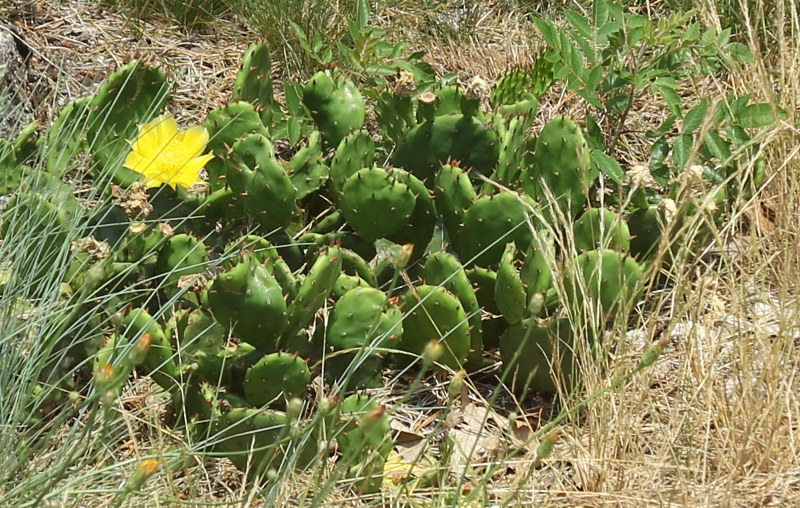
While our ride on Highway 6 was mercifully short, it got worse before it got better.

In order to make it onto Highway 6A, we needed to make a left turn. Cape Cod highway authorities: please put a stoplight here! We managed to live through that left turn and had a more pleasant experience on 6A.

Soon we were passing Pilgrim Lake on our right and we could see the ocean in between vacation homes on our left.

And then: the sign for Provincetown! We had done it!

After stopping for lunch at Governor Bradford’s, we took Race Point Road to the Province Lands bike trail.

We passed many stands of pitch pine (Pinus rigida), a tree that relishes the challenge of surviving wildfires.
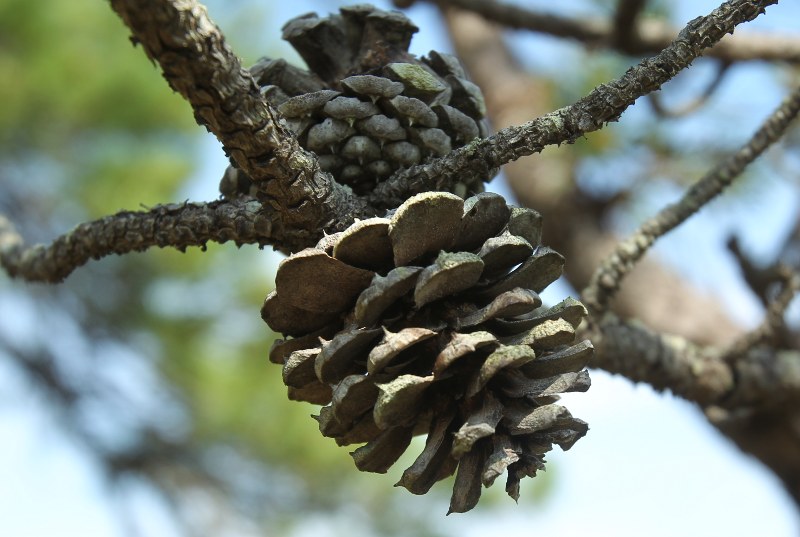
We stopped at the Visitor Center which had displays on the local flora and fauna. We also took a flight of stairs to the observation deck with views of the surrounding parkland and the ocean in the distance.
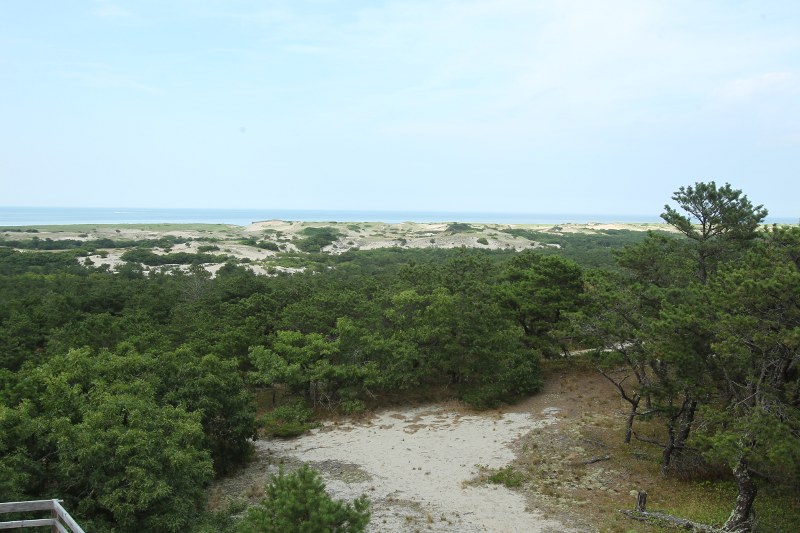

We also saw some threatening clouds though and heard rumbles of thunder. After checking with a ranger, who showed us radar indicating that the storms were moving toward us, we decided to turn around and head back into Provincetown.
We enjoyed a lobster dinner at Lobster Pot while waiting for the storm to pass (it never materialized). It was my first time eating lobster from the shell.
We took a high-speed ferry from Provincetown to loop back to Boston, avoiding a massive traffic jam. The ferry charged us an extra $6 to bring our bicycles onboard, but didn’t have a secure area to put them (this was a replacement ferry so maybe the regular ferry does have a bike area).

While leaving Provincetown, we saw a sea wall peppered with hundreds of cormorants.

We were treated to a few light shows over the water, thanks to thunderstorms to our north.

We were grateful not to run into any of these storms and arrived dry in our homes in Boston.